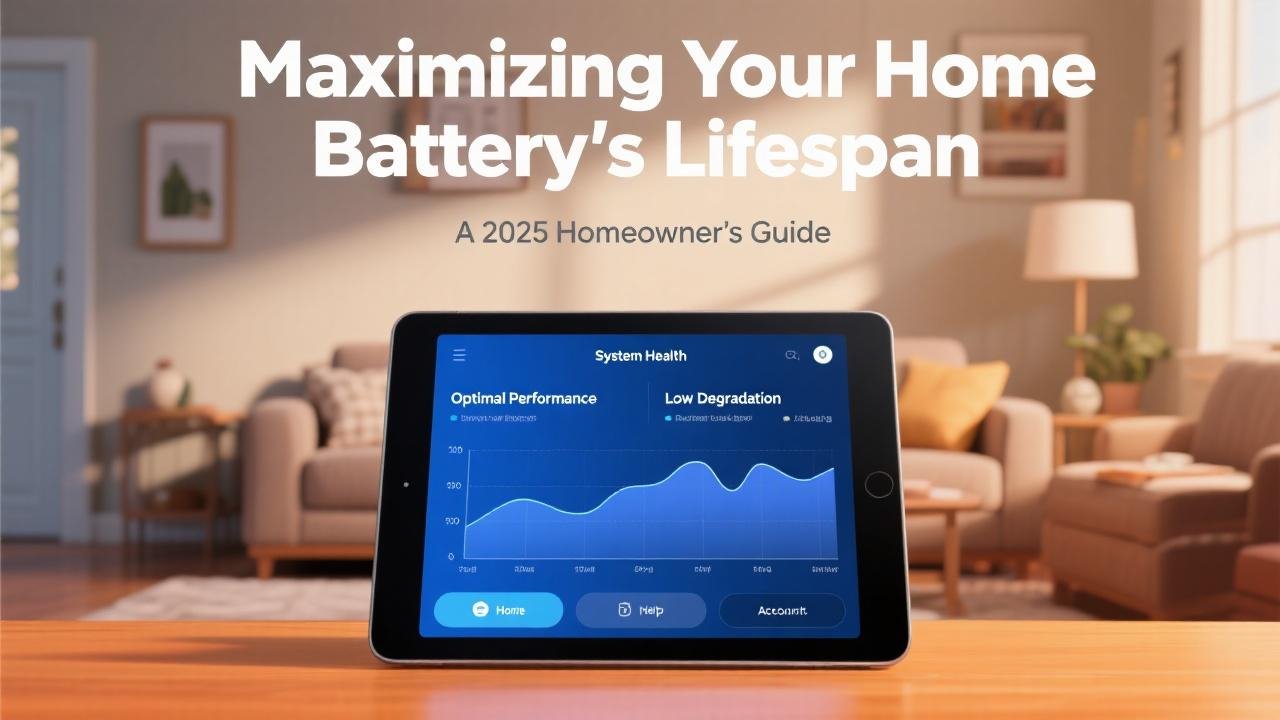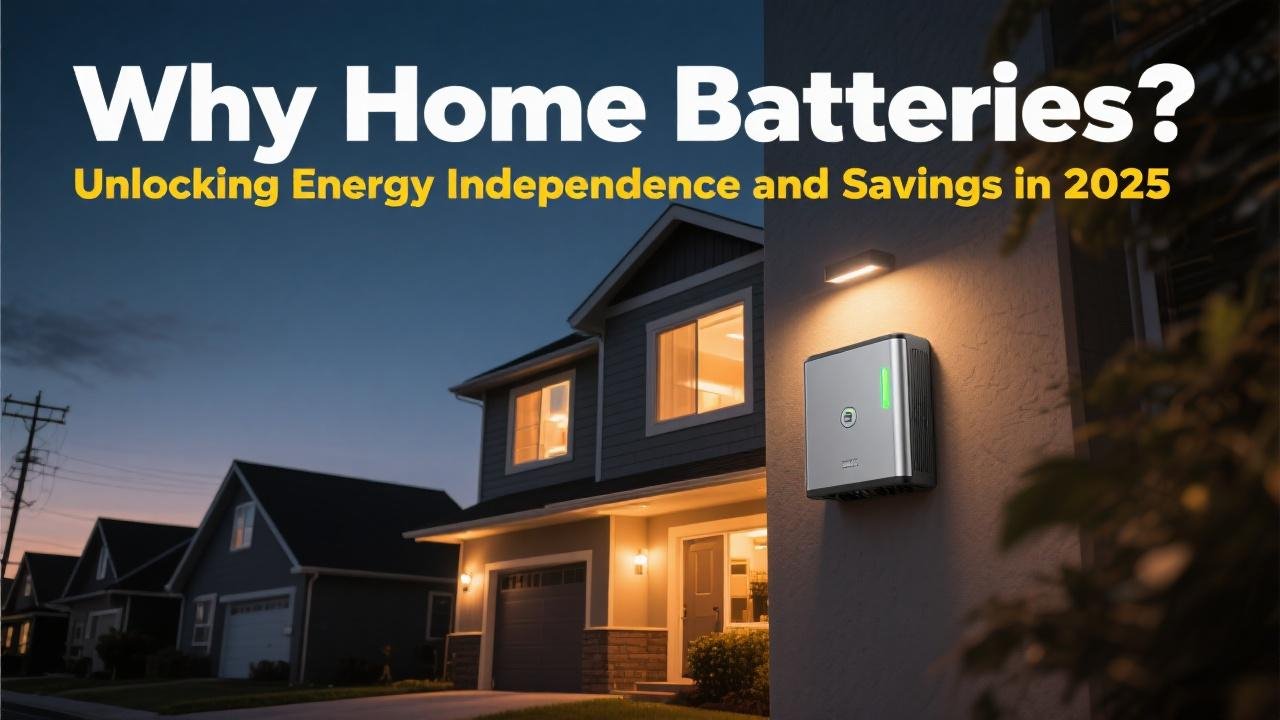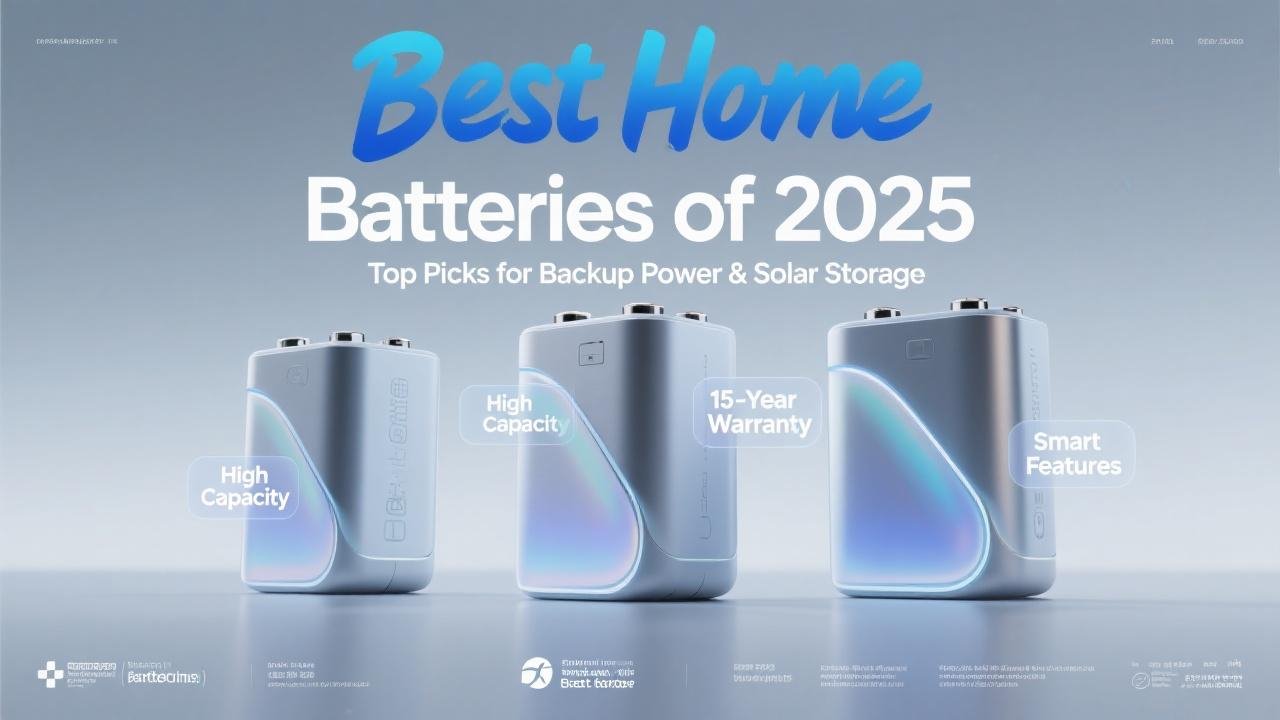Introduction: Protecting Your Powerhouse for the Long Haul
Investing in a home battery storage system in 2025 is a significant step towards energy resilience and maximizing your solar energy use. These advanced systems, whether LFP or NMC based, are designed for durability, but like any sophisticated technology, their operational lifespan can be influenced by how they are used and maintained. Understanding the factors that affect battery degradation and adopting best practices can help you extend the life of your home battery, ensuring it continues to deliver value for many years.
This guide provides practical tips for homeowners to maximize the lifespan of their solar batteries, drawing on general battery care principles and insights relevant in 2025.
Understanding Battery Degradation
All batteries, including the lithium-ion types used in home energy storage (like LFP and NMC), experience some level of degradation over time. This means their ability to hold a full charge gradually decreases with use and age. Key factors influencing degradation include:
- Cycle Life: Each time a battery is charged and discharged, it completes a “cycle.” Batteries are rated for a certain number of cycles before their capacity significantly declines (e.g., to 80% of its original capacity). LFP batteries generally have a higher cycle life than NMC batteries.
- Depth of Discharge (DoD): Regularly discharging your battery to very low levels can put more stress on it. While modern batteries are designed to handle deep discharges (many allow 90-100% DoD ), consistently avoiding extremely deep discharges if not necessary may help prolong life, though this is often managed by the Battery Management System (BMS).
- Temperature: Extreme temperatures, both hot and cold, can negatively impact battery health and accelerate degradation. Batteries operate best within a moderate temperature range.
- State of Charge (SoC) Management: Keeping a battery at a very high state of charge (e.g., 100%) or a very low state of charge for extended periods can also contribute to degradation, particularly for certain chemistries like NMC.
- Charge/Discharge Rates (C-rates): Very rapid charging or discharging can generate more heat and stress the battery components. Home battery systems are generally designed with appropriate C-rates for residential use.
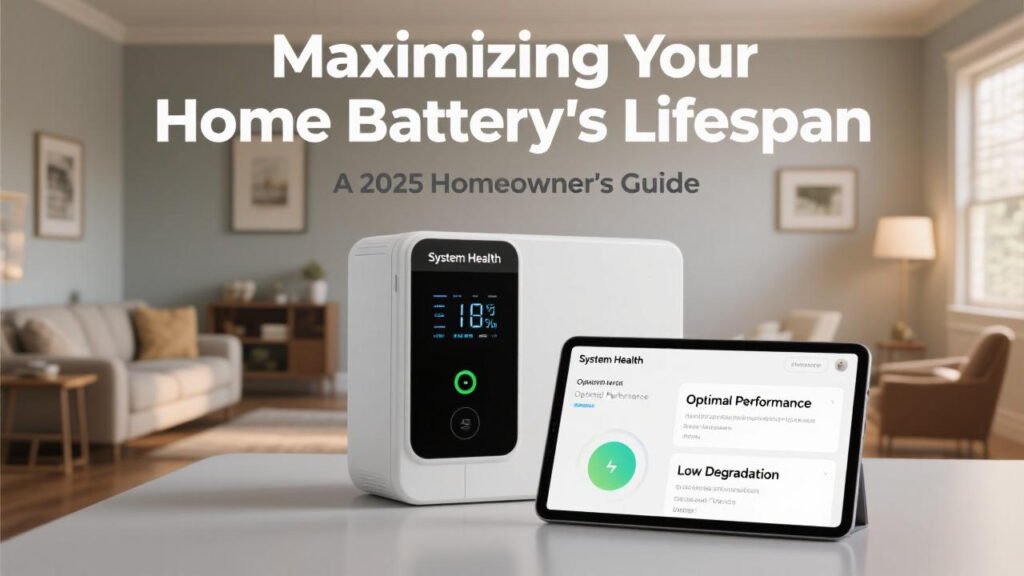
Tips to Maximize Your Home Battery’s Lifespan in 2025:
While your battery’s built-in Battery Management System (BMS) handles much of the optimization, here are some things to keep in mind:
Ensure Proper Installation and Location:
- Professional Installation: Have your battery installed by a certified professional according to manufacturer specifications and local codes. This ensures correct wiring, ventilation, and setup. Installers found through EnergySage are pre-screened, which can provide peace of mind.
- Optimal Location: Install the battery in a location that avoids extreme temperature fluctuations and direct sunlight. A garage or utility room is common, but ensure the chosen spot meets the manufacturer’s environmental requirements (check the IP rating for dust/water protection if considering outdoor placement for suitable units). Proper ventilation is also key to dissipate any heat generated during operation.
Understand Your Battery’s Recommended Operational Parameters:
- Consult Manufacturer Guidelines: Familiarize yourself with the manufacturer’s recommendations for optimal operation, including ideal temperature ranges and any specific advice on charging or discharging.
- Utilize Smart Features: Many 2025 battery systems (like those from Enphase, Tesla, Bluetti ) come with smart software that allows you to customize charging modes (e.g., backup-only, self-consumption, time-of-use optimization). Use these settings to align with your needs while respecting battery health. For instance, if backup power is your main priority, you might set a higher reserve capacity.
Avoid Consistent Extreme Discharges (If Possible and Practical):
- While modern BMS systems protect against damagingly deep discharges, if your system allows for setting a minimum state of charge (reserve level) for daily cycling, consider setting it slightly above the absolute minimum if you don’t need to maximize daily discharge for TOU arbitrage. For example, maintaining a 10-20% reserve for daily use might be gentler in the very long term, though this is highly dependent on the specific battery chemistry and BMS design. Always prioritize the manufacturer’s guidance.
Maintain a Stable Temperature Environment:
- Avoid Extreme Heat: High temperatures are a primary enemy of battery longevity. Ensure good ventilation around the battery unit. If installed in an area prone to high heat, consider if additional cooling or shading is necessary.
- Protect from Extreme Cold: While less common for indoor installations, if your battery is in an uninsulated space in a cold climate, be aware that very low temperatures can temporarily reduce performance and, in extreme cases, affect long-term health. LFP batteries can be more sensitive to cold than NMC.
Rely on the Battery Management System (BMS):
- Your battery’s BMS is its brain. It actively manages charging and discharging, balances cell voltages, and protects against over-temperature, over-voltage, and under-voltage conditions. Trust its operation and avoid trying to bypass its protective features.
Monitor Performance Regularly:
- Use the monitoring app or web portal provided with your battery system to keep an eye on its performance, state of charge, and any error codes or warnings. Early detection of anomalies can help address potential issues before they escalate.
Software Updates:
- Manufacturers often release software/firmware updates for batteries and their control systems. These updates can include performance improvements, new features, and enhanced battery management algorithms that can contribute to better longevity. Ensure your system receives these updates as recommended by the manufacturer.
Physical Inspection (Occasional):
- Periodically check the battery unit for any physical signs of damage, corrosion on terminals (though less common with sealed units), or loose connections (visually, do not attempt to tighten connections yourself unless qualified). Ensure vents are not obstructed. If you notice anything unusual, contact your installer or the manufacturer.
Understand Your Warranty:
- Be familiar with your battery’s warranty terms, particularly the guaranteed end-of-warranty capacity and cycle life. This gives you a benchmark for expected performance over time.
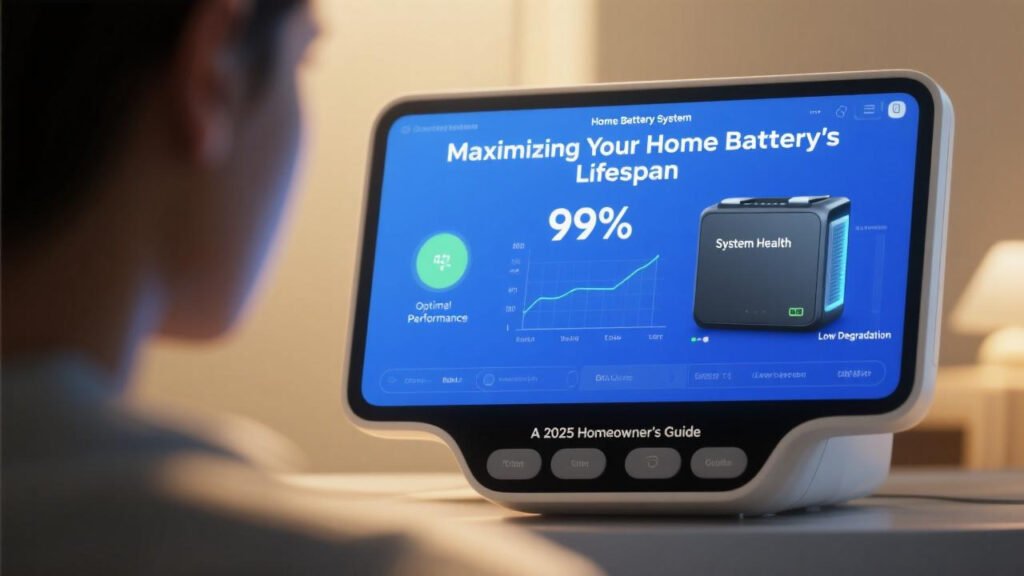
What About “Babying” Your Battery Too Much?
While these tips can help, modern home batteries are robust and designed for regular use. The BMS is there to prevent user-induced damage from typical operation. Overly restricting your battery’s use (e.g., setting an extremely high reserve that severely limits its daily utility for TOU savings or self-consumption) might negate some of the financial benefits it’s designed to provide. The key is to find a balance between optimizing for longevity and achieving your energy goals.
Smart Use for a Long-Lasting Asset
Your home battery is a valuable asset that can provide years of reliable service and savings. By ensuring proper installation, understanding its operational needs, maintaining a suitable environment, and relying on its sophisticated internal management systems, you can significantly contribute to maximizing its lifespan. While all batteries will degrade over time, following these best practices for your 2025-era system will help ensure you get the most out of your energy storage investment for as long as possible.
When selecting a battery, discussing long-term care and expected lifespan with installers, such as those found through EnergySage, can provide additional insights and help you choose a system and installer committed to durability and performance.

